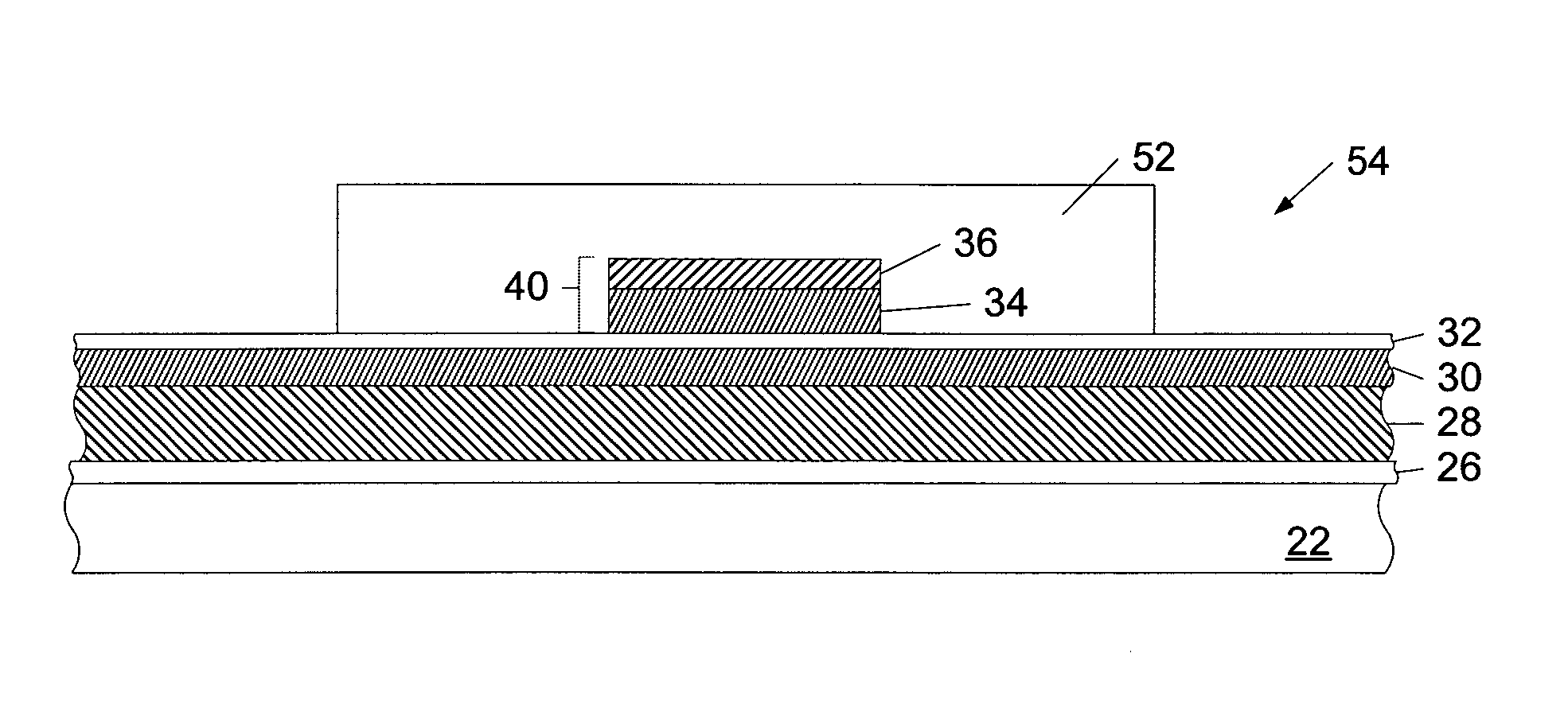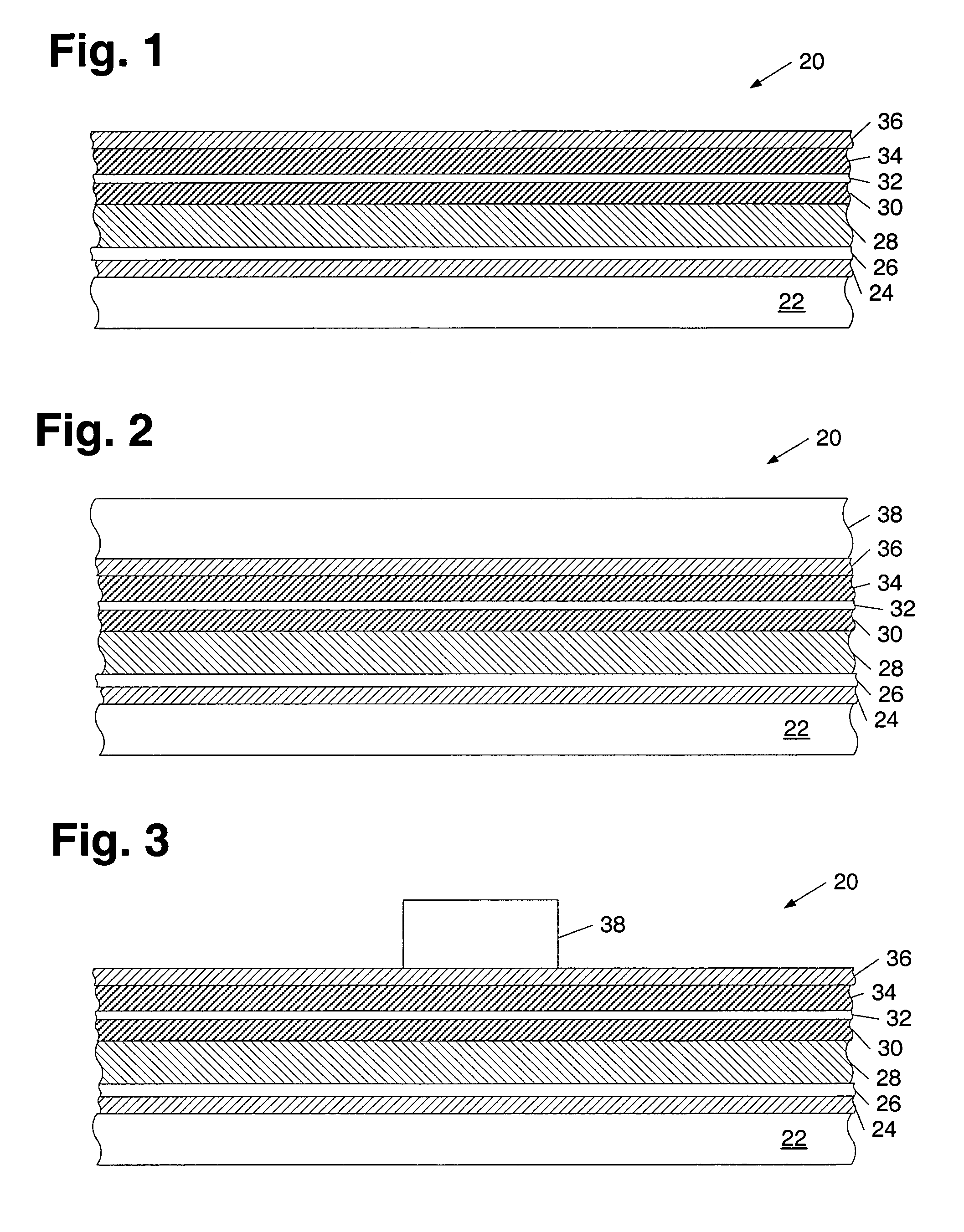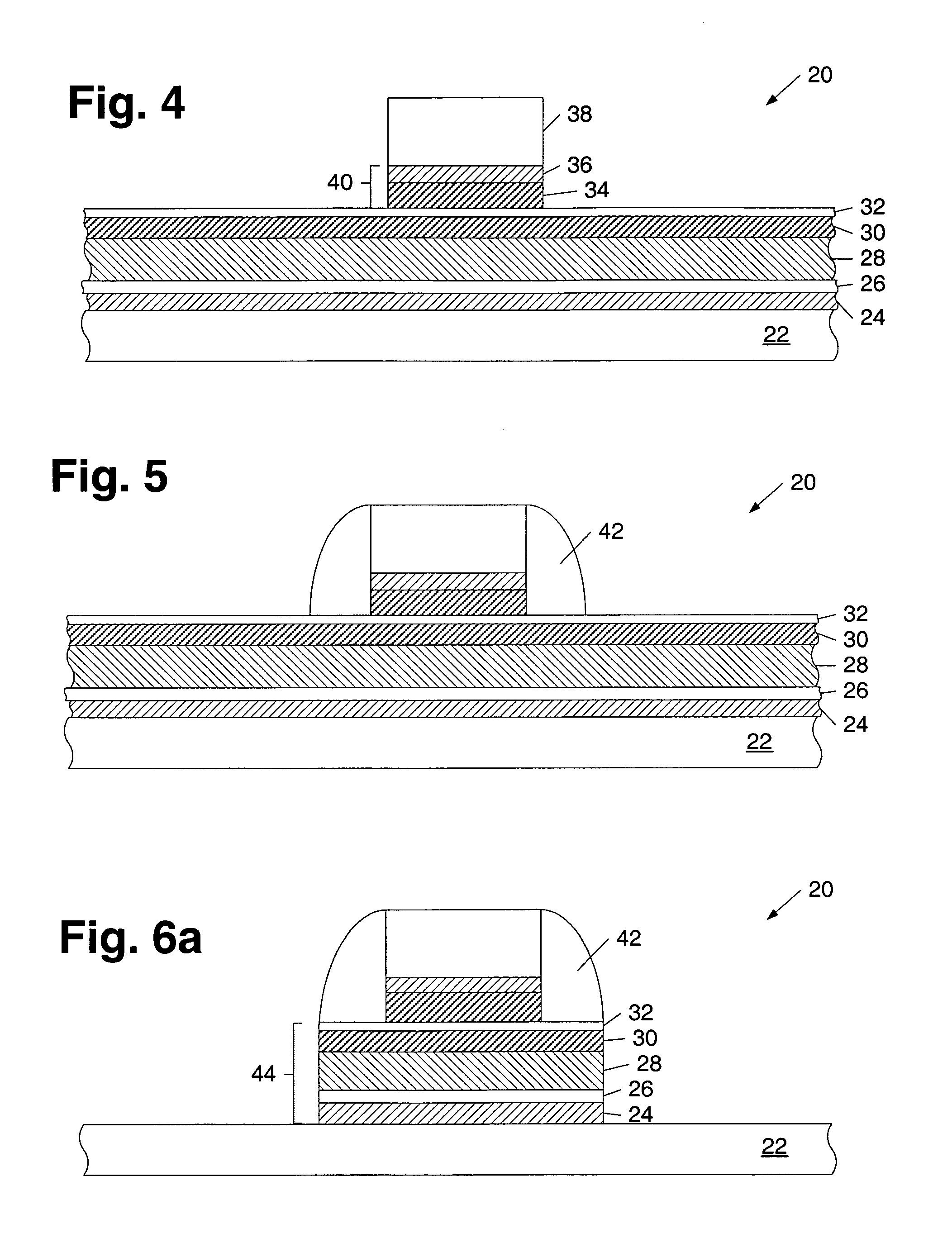Metal etch process selective to metallic insulating materials
a technology of etching process and metallic insulating material, which is applied in the manufacture/treatment of galvano-magnetic devices, basic electric elements, electric devices, etc., can solve the problem that the method may be substantially absent of oxygen plasma, and achieve the effect of reducing the amount of stress contained within the device, reducing the exposure to relatively large temperature variations during the fabrication of the device, and low thermal budg
- Summary
- Abstract
- Description
- Claims
- Application Information
AI Technical Summary
Benefits of technology
Problems solved by technology
Method used
Image
Examples
Embodiment Construction
[0040]Turning to the drawings, exemplary embodiments of methods for processing a semiconductor topography are shown in FIGS. 1–15. In particular, methods for patterning one or more metal layers arranged above a metal insulating layer are provided. In addition, methods of producing a magnetic tunneling junction (MTJ) stack within a semiconductor device are provided. FIG. 1 depicts a partial cross-sectional view of semiconductor topography 20 in layers 22–36 formed upon and in contact with each other. In some embodiments, semiconductor topography 20 may include additional layers formed upon and in contact with one or more of layers 22–36. Alternatively, semiconductor topography 20 may include fewer layers than shown in FIG. 1. As such, it is noted that several layer configurations may be used for the method described herein. Semiconductor topographies 20 and 54 shown in FIGS. 1–11 are merely shown as exemplary embodiments. In particular, the composition, thickness, number, and arrange...
PUM
 Login to View More
Login to View More Abstract
Description
Claims
Application Information
 Login to View More
Login to View More - R&D
- Intellectual Property
- Life Sciences
- Materials
- Tech Scout
- Unparalleled Data Quality
- Higher Quality Content
- 60% Fewer Hallucinations
Browse by: Latest US Patents, China's latest patents, Technical Efficacy Thesaurus, Application Domain, Technology Topic, Popular Technical Reports.
© 2025 PatSnap. All rights reserved.Legal|Privacy policy|Modern Slavery Act Transparency Statement|Sitemap|About US| Contact US: help@patsnap.com



